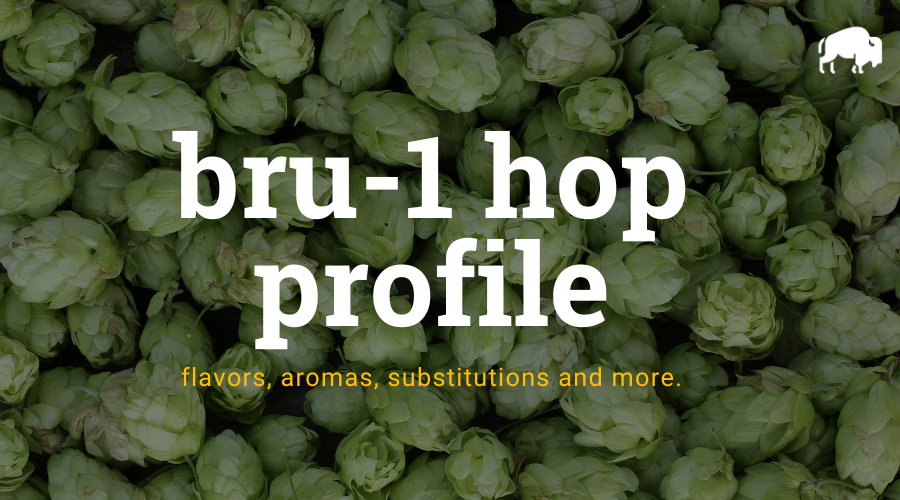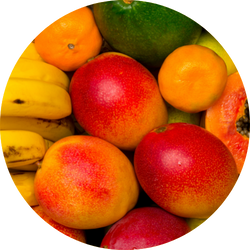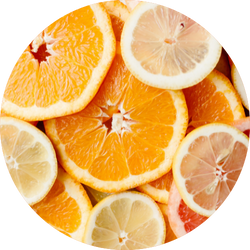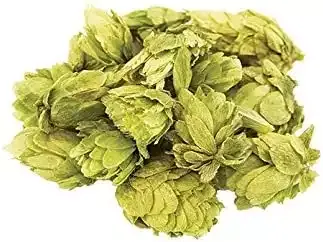
BRU-1 hops are a hop variety developed by John I. Haas and Brulotte Farms in the Yakima Valley. They are big, bold, and fruit-forward, with a clean bittering quality and an alpha acid content of 13-15%.
BRU-1 hops have a high myrcene oil content, contributing to their pineapple and stone fruit aroma with a soft spice note. They are versatile and can be used in various pale ales and hop-forward beer styles.
BRU-1 hops are known for their distinct sweet fruit aroma, especially pineapple, and they can improve haze stability in certain beer styles. They are often combined with other hops, such as Citra and Chinook, to create a depth of fruit flavor.
| Usage: | Aroma |
| Country of Origin: | United States |
| Hop Growers Code: | BRU-1 |
Where To Buy BRU-1 Hops
BRU-1 Flavor And Aroma
BRU-1 is an aroma hop that is often described to have the following aroma characteristics:

tropical fruit

grassy

citrus
BRU-1 Hop Oil Breakdown
Hop oils can vary from year to year and farm to farm but based on our research, here are the typical values we have seen reported. This information comes from various hop farms, The Hop Aroma Compendium, and For The Love Of Hops.
| Alpha Acid % (AA) Alpha acids are what is isomerized when boiling to create bitterness in beer. | 13% – 15% |
| Beta Acid % Beta acids are what give hops their more aroma and flavor compounds. | 8% – 10% |
| Alpha-Beta Ratio This ratio of alpha acids to beta acids determines how quickly bitterness fades during aging. Lower ratios are common for aromatic varieties. | 1:1 – 2:1 |
| Co-Humulone as a % of Alpha Higher numbers are said to impart a harsher bitterness. | 35% – 37% |
| Total Oils (mL/100g) With more total oils, typically comes a more complex hop profile but these are highly volatile compounds. | 1.5mL – 2mL |
| Myrcene green, resinous | 50% – 55% |
| Humulene woody, piney | 7% – 8% |
| Caryophyllene woody | 9% – 11% |
| Farnesene floral | 0% – 1% |
| Other Oils: Includes beta-ionine, beta-pinene, limonene, linalool, geranoil & selinene | 25% – 34% |
| Hop Storage Index (HSI) The HSI indicates the percent of alpha and beta acids lost after 6 months of storage at room temperature (68°F or 20°C). | Data Not Available |
| Hop Storage Index (HSI) Rating | Data Not Available |
BRU-1 Hop Substitutions
Replacing one hop for another is seldom straightforward but sometimes you don’t have the right hop or the right quantity of hops for the beer you want to make. For those situations, we have made a comprehensive list of hops to substitute on brew day.
These substitutions aren’t perfect as hop chemistry is pretty complex.
We wanted to make this list of substitutions with varietals that are easy to find when possible. For BRU-1, we recommend substituting with the following hops:
Beer Styles
For the most part, any hop could have a place in just about any beer style. Based on popular beers, historical usage, and our own preferences, we would recommend using BRU-1 for IPA, New England IPA, Pale Ale, Wheat Beer, Golden Ale. That being said, experiment and see what works best for you.
References
https://www.hopslist.com/
https://www.ars.usda.gov/
https://www.brewersassociation.org/
https://www.barthhaasx.com/
https://www.yakimachief.com/
Hieronymus, Stan. For The Love of Hops. Brewers Publications, 2012
The Hop Aroma Compendium. 2012


